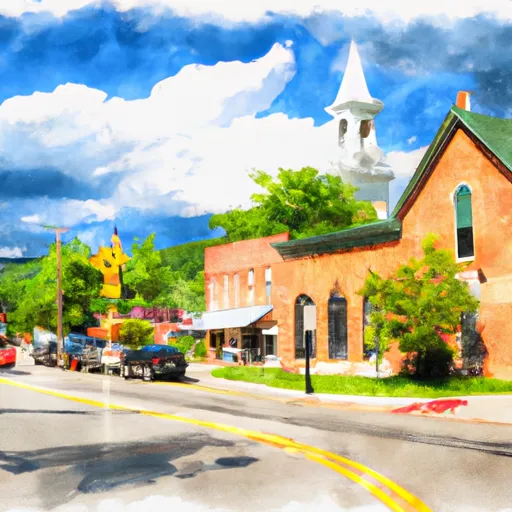-
 Snoflo Premium
Snoflo Premium
Get unlimited access to all our content
With no Ad interruptions! - Start Your Free Trial Login with existing account
Bristol
Eden Index
Climate
7.6
•
Recreation
4.2
•
Community
2.2
•
Safeguard
5.1/10

Bristol, Vermont is a small, rural community located in the western part of the state. The climate is typical of New England, with cold winters and mild summers. The area is known for its numerous rivers and streams, which provide excellent fishing and boating opportunities. The hydrology constituents of the area include the New Haven River, which runs through town and is a popular spot for kayaking and canoeing. Bristol is also close to the Green Mountains, offering plenty of outdoor recreation opportunities, including hiking, skiing, and snowboarding. The town is home to several parks and natural areas, including the Bristol Cliffs Wilderness Area, which offers stunning views of the surrounding landscape. Overall, Bristol is a great place for outdoor enthusiasts looking to explore the natural beauty of Vermont.
What is the Eden Index?
The Snoflo Eden Index serves as a comprehensive rating system for regions, evaluating their desirability through a holistic assessment of climate health, outdoor recreation opportunities, and natural disaster risk, acknowledging the profound impact of these factors on livability and well-being.
Climate Health Indicator (CHI): 7.6
Bristol receives approximately
1110mm of rain per year,
with humidity levels near 76%
and air temperatures averaging around
7°C.
Bristol has a plant hardyness factor of
4, meaning
plants and agriculture in this region thrive during a short period during spring and early summer. Most
plants will die off during the colder winter months.
By considering the ideal temperature range, reliable water supplies, clean air, and stable seasonal rain or snowpacks, the Climate Health Indicator (CHI) underscores the significance of a healthy climate as the foundation for quality living.
A healthy climate is paramount for ensuring a high quality of life and livability in a region, fostering both physical well-being and environmental harmony. This can be characterized by ideal temperatures, reliable access to water supplies, clean air, and consistent seasonal rain or snowpacks.
Weather Forecast
Streamflow Conditions
Richelieu
Area Rivers
Richelieu
Snowpack Depths
Richelieu
Reservoir Storage Capacity
Richelieu
Groundwater Levels
Recreational Opportunity Index (ROI): 4.2
The Recreational Opportunity Index (ROI) recognizes the value of outdoor recreational options, such as parks, hiking trails, camping sites, and fishing spots, while acknowledging that climate plays a pivotal role in ensuring the comfort and consistency of these experiences.
Access to outdoor recreational opportunities, encompassing activities such as parks, hiking, camping, and fishing, is crucial for overall well-being, and the climate plays a pivotal role in enabling and enhancing these experiences, ensuring that individuals can engage in nature-based activities comfortably and consistently.
Camping Areas
| Campground | Campsites | Reservations | Toilets | Showers | Elevation |
|---|---|---|---|---|---|
| Chittenden Brook | 17 | 1,844 ft | |||
| Underhill State Park | None | 1,969 ft | |||
| Bomoseen State Park | 66 | 445 ft | |||
| Burton Island | None | 126 ft | |||
| St. Catherine State Park | 60 | 520 ft | |||
| Mt. Philo State Park | 10 | 436 ft | |||
| Moosalamoo | 19 | 1,547 ft | |||
| Branbury State Park | 45 | 573 ft | |||
| Half Moon Pond State Park | None | 643 ft | |||
| North Beach | 137 | 163 ft |
Nearby Ski Areas
Catastrophe Safeguard Index (CSI):
The Catastrophe Safeguard Index (CSI) recognizes that natural disaster risk, encompassing floods, fires, hurricanes, and tornadoes, can drastically affect safety and the overall appeal of an area.
The level of natural disaster risk in a region significantly affects safety and the overall livability, with climate change amplifying these risks by potentially increasing the frequency and intensity of events like floods, fires, hurricanes, and tornadoes, thereby posing substantial challenges to community resilience and well-being.
Community Resilience Indicator (CRI): 2.2
The Community Resilience Indicator (CRI) recognizes that education, healthcare, and socioeconomics are crucial to the well-being of a region. The CRI acknowledges the profound impact of these elements on residents' overall quality of life. By evaluating educational resources, healthcare accessibility, and economic inclusivity, the index captures the essential aspects that contribute to a thriving community, fostering resident satisfaction, equity, and social cohesion.

